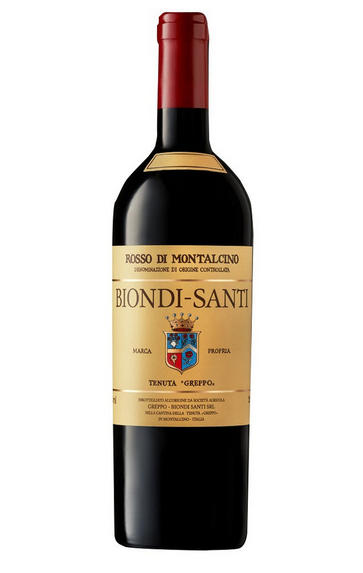
2019 Rosso di Montalcino, Tenuta Greppo, Biondi-Santi, Tuscany, Italy
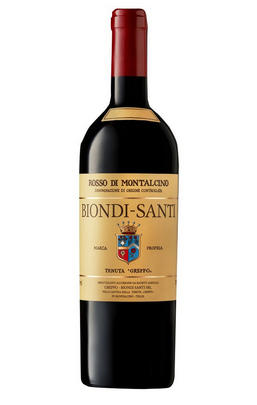
Critics reviews
The 2019 Rosso di Montalcino keeps me coming back to the glass to take in its dusty mix of dried strawberries and currants offset by lifting nuances of shaved pine and mint. Soft and round in expression, the 2019 impresses on its lush textures and vivid wild berry fruit. Through it all, a core of saline tension builds, mingling minerals with gentle tannins, as the 2019 finishes with a staining of concentration, yet maintains a lovely freshness.
Drink 2023 - 2028
Eric Guido, Vinous (October 2022)
The Rosso’s fruit comes from estate vineyards in Tenuta Greppo to the southeast of Montalcino, Ribusuoli just below, and Pievecchia to the north of Montalcino. Aged in Slavonian oak for 12 months.
A bright ruby colour in the glass, this is immediate and fragrant, offering dried rose, cherry blossom, cigar leaf and dried herbs. The palate is gentle but characterful, with lightly pithy tannins and bright acidity to prop up layers of sour cherry and rosemary. Good finesse, focused length. A good introduction to Biondi-Santi’s style.
Drink 2022 - 2028
Tom Parker MW, JancisRobinson.com (December 2022)
Aromas of sliced citrus, cherry and flowers follow through to a medium body, with creamy tannins and crunchy fruit at the finish. A lovely combination of fruit and acidity. Very drinkable now but will age nicely.
James Suckling, JamesSuckling.com (October 2022)
The 2019 Rosso Di Montalcino is pure and energetic, with ripe cherry fruit, rose petals, orange zest, and spice. Medium-bodied, with fine tannins and ripe, soft, supple fruit throughout, it is energetic and long on the palate, with a soft, coating mineral texture. Elegant, pure, and warming on the finish, with no harsh edges, its floral perfume lingers with notes of lavender, red berries, and refreshing salinity.
Drink 2025 - 2040
Audrey Frick, JebDunnuck.com (March 2023)
About this WINE
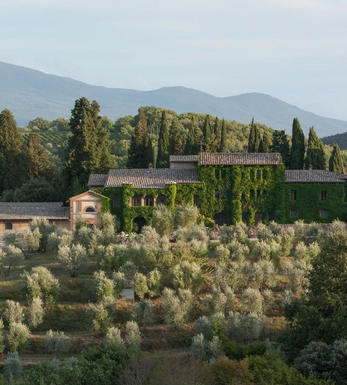
Biondi-Santi
Biond-Santi remains a beacon for traditionally made Rosso and Brunello di Montalcino.The Greppo vineyards of the Biondi Santi family date back to the 1800s. Clemente Santi, nephew of Giorgio Santi, was the first to create red wines suitable for ageing, and his oenological techniques learnt through agriculture, chemistry and science were far more advanced than his peers.
Clemente’s knowledge was passed on to his nephew Ferruccio Biondi Santi, who skilfully continued to run the Greppo estate, and managed to keep production running after the First World War. In 1932 he was described as ‘the inventor of Brunello’.
The estate has been passed down through the family to this day, and is currently managed by Franco Biondi Santi, along with the help of his two children, who will eventually take on the business themselves.
Brunello del Greppo now has twenty five hectares dedicated to its production, and the traditional agronomy and cellaring practises are still used to give this grape its character and quality.
Biondi-Santi harvests early. The wines are subject to a long maceration period, in steel for the straight Brunello, and oak for the Riserva, and are then aged in large oak casks.
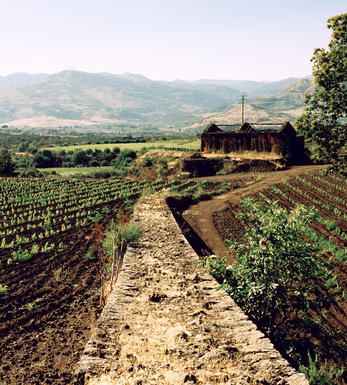
Rosso di Montalcino
Rosso di Montalcino is a large Tuscan DOC, to the far south of the Chianti Classico region, which has been classified since 1983.
The wines are fruity, soft, light and forward-maturing. They come from Sangiovesse vines outside the finer Brunello di Montalcino DOCG, harvested at up to 62 hl/ha, or from declassified Brunello fruit (often from young vines) in which case the yield must be the same as Brunello wines, at 55 hl/ha.
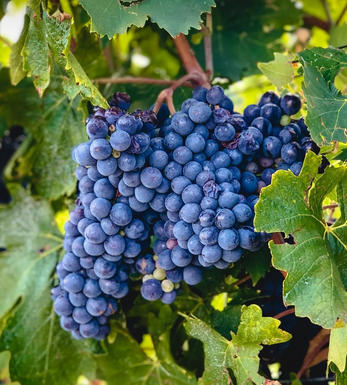
Sangiovese
A black grape widely grown in Central Italy and the main component of Chianti and Vino Nobile di Montepulciano as well as being the sole permitted grape for the famed Brunello di Montalcino.
It is a high yielding, late ripening grape that performs best on well-drained calcareous soils on south-facing hillsides. For years it was blighted by poor clonal selection and massive overcropping - however since the 1980s the quality of Sangiovese-based wines has rocketed upwards and they are now some of the most sought after in the world.
It produces wines with pronounced tannins and acidity, though not always with great depth of colour, and its character can vary from farmyard/leather nuances through to essence of red cherries and plums. In the 1960s the advent of Super Tuscans saw bottlings of 100% Sangiovese wines, as well as the introduction of Sangiovese/Cabernet Sauvignon blends, the most famous being Tignanello.


Buying options
Add to wishlist
Description
Lifted and fragrant, Sangiovese fruit on the nose, still quite primary with red fruit characteristics. Fabulous purity on the palate and packed with energy, this is a great wine, bright and ripe with summer fruit and plums, balanced by racy acidity and great quality, fine tannins.
Drink 2023 - 2030
Chris Pollington, Senior Account Manager, Berry Bros. & Rudd
wine at a glance
Delivery and quality guarantee